By Naimeesha Murthy
The work-life equation is a delicate balance between your job and your life outside work. Some workplaces call it personal sustainability. Tilting the scale to any one side of the divide means that your work-life happiness might be in jeopardy. While most workplaces have shifted into remote working, this arrangement has created a thin line between work and life, making it hard to find a balance. This can lead to chronic burnout — which is very real and rising by the day because of the pressure many employees put on themselves to stay afloat.
A recent study by Civic Science showed that only 47% of employed respondents were happy with their jobs. This data clearly indicates a level of desire on the part of many employees for more. They are looking for workplaces that value their personal time. This realization of self-worth is one of the factors contributing to the great resignation. Is it possible to be more mindful, take control of your well-being and increase happiness and also reduce burnout? Sure it is! Below I share some research-backed frameworks and practices anyone can adopt to regain work-life happiness.

1. Build rituals and an abundant mindset.
Realizing that building an abundant mindset and being cognizant of time affluence and happiness go hand and hand. A big misconception today is that of time scarcity. For example, you may have 20 minutes before you pick up your child, or you might have a 30-minute break before your next meeting. Sometimes, that 30-minute break can feel like less time than the 20 minutes before you need to pick your child — and that’s attributed to your mindset around “time.”
What people at work could be going through right now is what you can call time bursts or time confetti. For you to make sense of the time you have today and integrate work and life, you could consider creating a personal to-do list during your time bursts. Structure your day along with creating a list of things you need to do while allocating time to each item. Your list could have a range of activities like meditating, reading ten pages of a book or going for that short walk between your meetings to connect with nature or people.
Incorporating mindful practices like the Pomodoro technique of a five-minute break for every 20 minutes spent in front of the laptop, eating your meals on-time and hydrating regularly all contribute to increasing happiness. Also, know that building rituals can also apply at a workplace — by incorporating simple and intentional SCRUM rituals and processes like daily stand-ups can help increase efficiency and also build team dynamics.
Many go through life with the feeling that they need to create more wealth, but the reality is that money does have a diminishing marginal utility. As an individual’s income increases, the additional benefit to that individual decreases. This is because every subsequent dollar is satisfying less and less urgent or physiological wants. Research shows that people who choose time over money tend to be happier than people who do the opposite. One way you could make more time is by paying for things you don’t particularly care to do yourself. For example, order meals instead of food prepping and cooking or hire house help so you can focus on other tasks that matter most.
2. Set boundaries and make time to do nothing.
Whether working from an office setup or remotely, understand that you are more than your work. There has to be a limit in how much you can do over what specific time. Resist the temptation to check your work emails or respond to phone calls from your colleagues at odd hours. Luckily, some tools and features could help with setting boundaries. Common ones are the delayed or autoresponse and unread features on Slack and email. Use such features to plan your work and set clear boundaries that will help improve your overall well-being.
Creativity comes best from a mind that has the time to think and be mindful of the things around them. Sometimes it helps to slow down to speed up. The best ideas often come from a place of doing nothing or boredom rather than a place of intense productivity and overthinking. Slowing down gives you space to think clearly, reflect and see the bigger picture, which helps increase your productivity and output.
3. Job craft and pursue your passion beyond work.
At the bare minimum, an individual should feel comfortable about the job they are doing. Here is where job crafting comes in — a concept of altering aspects of your job to give it more meaning. Are there aspects of your work that you like, and can you do more of that other than what you don’t? This helps give you satisfaction and happiness in the workplace. The same concept can be extended in your personal life. If you have the time and energy beyond your work hours, find a cause that aligns with your passion and volunteer your skills like mentoring — which also serves as a great opportunity for one to hone their leadership skills.
Ultimately, know that maintaining work-life happiness comes down to being mindful and intentional about making choices, building good habits and routines, setting boundaries, finding your passion and prioritizing life after work. Making time for friends and family could be all you need to do to bring yourself back to a state of happiness and life fulfillment while enjoying your work. Know that burnout is real but avoidable if you start being conscious of your well-being and work-life happiness. You can give time to work while also finding time to follow your interests and passions that can lead to work-life happiness.
Click here for original article
Follow Naimeesha on LinkedIn
Priority Management is a worldwide training company with 55 offices in 15 countries. We have successfully trained more than two million graduates in Priority workshops. Our programs help companies and people be more effective and manage their workflow in and out of the office by providing tools, processes and discipline. Simply put – A Better Way To Work! Clients range from Fortune 500 companies, small-to-medium businesses and government/military employees.
Click Here to learn more about how Priority can help you and your team WorkSm@rt, develop essential management skills and the competencies to….make life and work better and happier!



